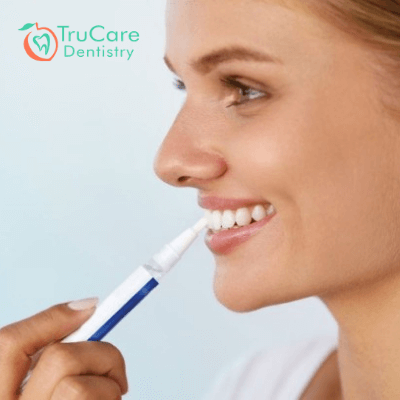
Everyone is obsessed with dazzling smiles. Thus, oral care products manufacturers offer a wide range of whitening gels and trays to turn those pearly whites even whiter. Dental offices also provide professional whitening treatments that suit an individual’s unique dental health needs. But, people are attracted to gels available at the pharmacy stores or supermarkets.
What’s Bleachorexia?
Multiple studies have pointed out that trays or paint-ons and strips are often misused. Unfortunately, some individuals prefer using at-home whitening kits whenever they feel their teeth are not up to the mark. People even link the level of teeth whiteness with hygiene. They go to the extent of using the product every week when prescribed by the manufacturer to use just once in six months. Such an unhealthy obsession with whiteness is referred to as Bleachorexia. The COVID-19 pandemic forced dentists to remain shut for several months, and people started relying on over-the-counter products even more. Using these products more than the recommendation can trigger multiple side-effects.
Risks and side-effects of over-bleaching
- Over-bleaching can result in dental erosion
Teeth whitening solutions, especially those that do not have the FDA’s approval, can prove harmful. Over-the-counter solutions are designed to be administered without professional supervision. However, over-bleaching can result in irreparable damage to dental enamel. It can turn the teeth unattractive and make eating difficult for the patient. Plus, weak enamel also increases the risk of cavities.
- Sensitivity
A little-bit pain experienced while eating something too hot or cold can be considered normal. However, patients who over-bleach their teeth experience severe, long-lasting pain, and sensitivity. The enamel erosion caused due to repeated bleaching increases the teeth sensitivity to cold and hot stuff. Such individuals also find chewing hard food difficult and painful.
- Oral irritation
Some persons may experience irritation in the throat, gums, and palate due to the bleach. If swallowed, some gels can also result in a nauseous feeling. Unfortunately, the irritation and uneasiness may not go away even if the patient stops using the solution.
- Gum recession
Gums aren’t as resilient as teeth in some patients. They can become inflamed and irritated due to the bleach. Gums may retract, recede, or start bleeding while brushing. Further, gums can shrink and expose the lower part of the teeth and root. The condition can be an open invitation to cavities and gum disease. The case becomes challenging for dentists once the gums start to recede, and the patient may need to undergo a soft tissue graft procedure.
How often can bleach products be used?
As per the stats, Americans purchase more than a million dollars worth whitening products every year. Plus, spas bleaching treatments and home bleaching kits have made it easy for people to undergo the procedure once a month.
FDA, ADA approved kits can be effective and safe. But, people end up overusing the same due to their obsession with a great smile. Even using laser-activated gel without professional guidance can be harmful.
Your dentist can recommend the best over-the-counter whitening trays depending on your oral health history. Dentists recommend patients undergo in-office power bleaching sessions once or twice each year. Experts may also prescribe a nightguard that can be used for a week. However, bleaching more than twice a year can prove to be fatal for a person’s overall oral health. The pain and other uncomfortable side-effects caused due to chemicals do reduce after a couple of weeks. However, severe ones related to gum and root require professional attention.
If the concentration of peroxide in the whitening product is 35 percent or more, it is advisable to apply the product a lesser number of times a year and in small quantities. You can reduce the risk involved in using whitening products by choosing ADA approved items under your dentist’s guidance.
Why opt for a cleaning and whitening procedure at a dental office?
Teeth whitening process is one of the most performed cosmetic dentistry procedures in the US. Dentists examine the patient’s mouth to check the possible reasons behind discoloration. They also perform dental cleaning procedures and fill up cavities if required before starting the whitening process. If the discoloration has happened due to medications that the patient is consuming, the dentist might recommend porcelain veneers instead of whitening. The same goes for discoloration triggered due to the use of fluoride-based dental care products.
Teeth should stay white for a couple of months, unless of course, the person consumes too much tea, coffee, and other stain-causing food items like curry, blueberry smoothie, cumin, mustard, etc. Brushing your teeth twice, preferably after every meal, can help in avoiding re-staining.
Are you searching for a trustworthy teeth whitening dentist in Roswell, GA? You should call TruCare Dentistry and fix an appointment for a consultation. The dental office follows all the safety measures recommended by the ADA and OSHA guidelines for patient and staff safety.
